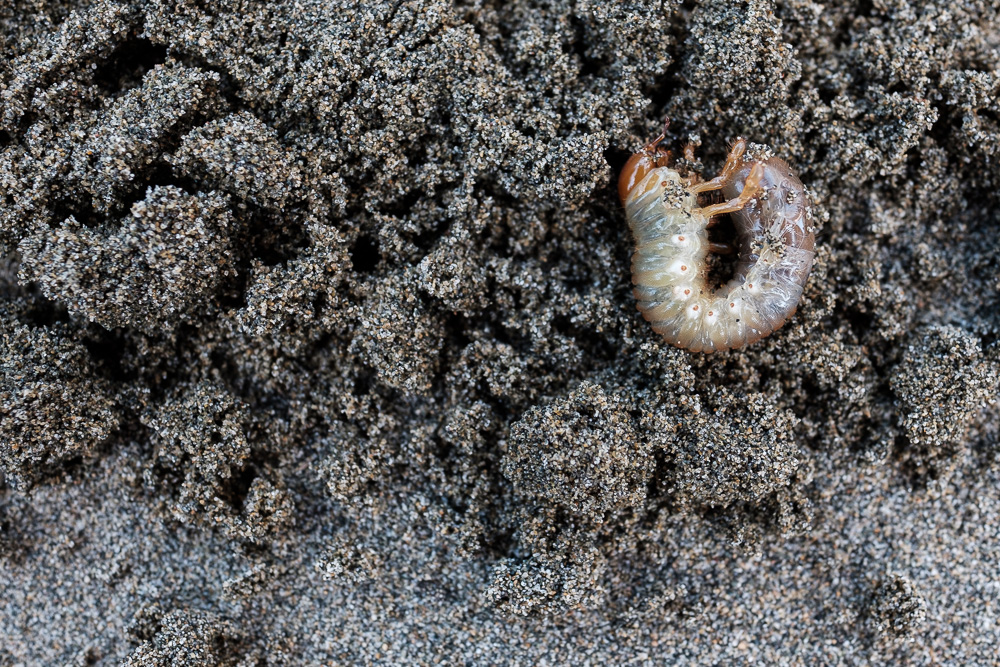Harsh environments like shorelines and dunes are good places to look for beetles. While on a hike at Radar Hill Beach in late May, I noticed an isolated log in the dunes above the beach. In a hot environment like sand dunes, wood and plants provide shade for small insects. I wasn’t really expecting anything, but thought that it would be interesting to check under the driftwood.
Mystery Beetle Research

Turning over the log revealed several small beetles along the edge line of the depression left by the wood. I didn’t know what these beetles were but decided to photograph them and determine if I could identify them. Research on Bug Guide and helpful suggestions from a Vancouver Island naturalist Facebook group pointed me in the right direction. The beetles are Nebria diversa, a ground beetle that is found in dune habitats. A check of Efauna showed collection records of Nebria diversa in Pacific Rim National Park Reserve. All of this evidence makes me reasonably sure that this identification is correct.
More Beetle Research

I’m not as confident with the identification of a second beetle (in larval form) that was also under the log. The larva is likely a chafer beetle but the habitat helps to sort the species. The ten-lined June beetle (Polyphylla decemlineata) is a common chafer beetle on Vancouver Island but the location of the larva didn’t quite fit with the species habitat. It is more likely that this is Polyphylla crinita, commonly found in coastal dune habitat.
Observing Details
I’m always looking for things that are out of place or unusual. After a quick look at these cooperative beetles, I replaced the driftwood and we continued our hike. Becoming more aware of the natural world around us requires observation. Understanding when a plant or insect is unusual and realizing that it is important to record these observations is key. Having a natural curiosity to take a closer look can lead to rewarding discoveries!